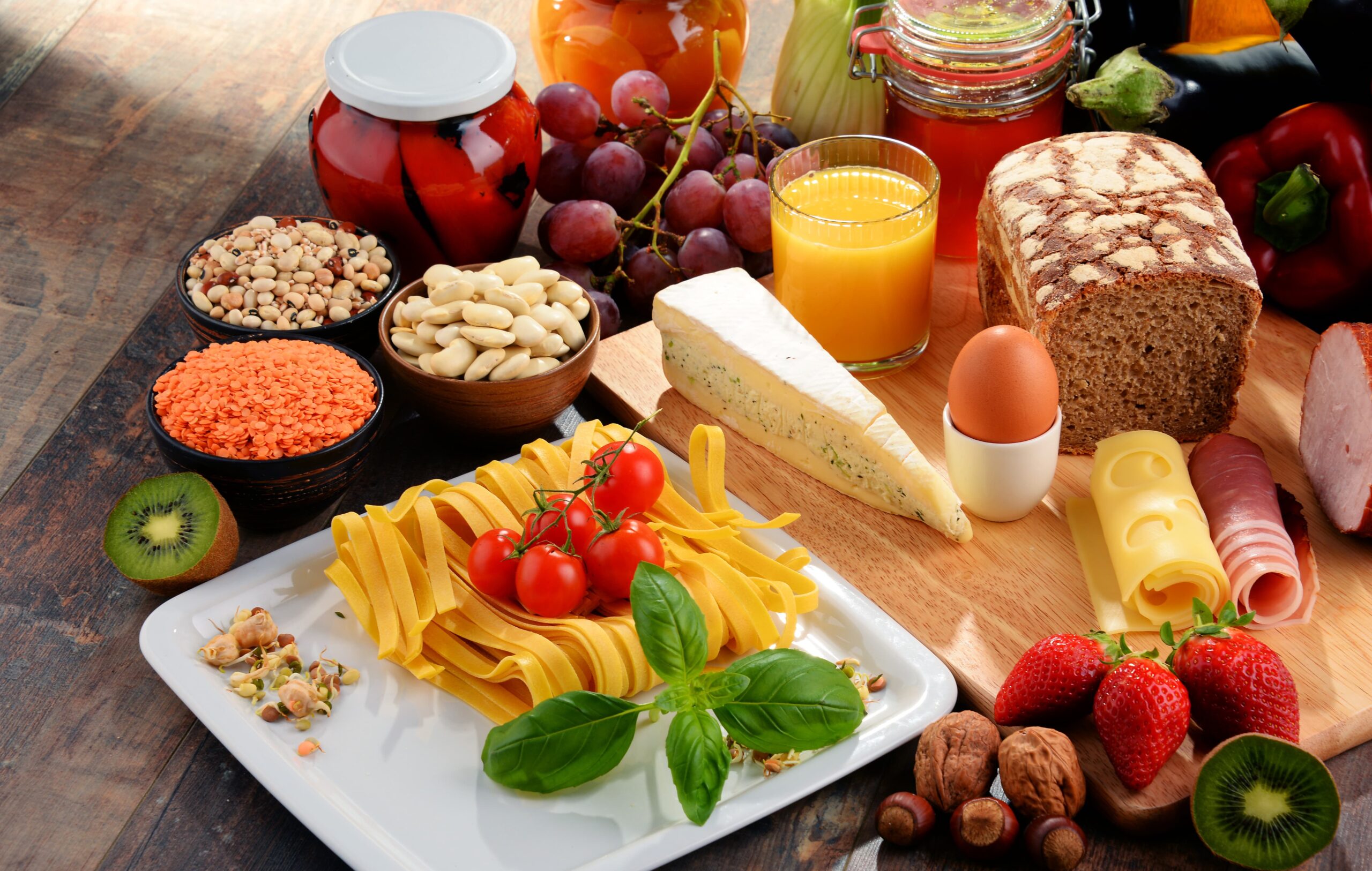Food & Beverage The world of food & beverage is dynamic and constantly evolving, reflecting cultural shifts, technological advancements, and changing consumer preferences. As we move through 2024, staying informed about the latest trends can enhance your culinary experiences and help you make informed choices. This comprehensive guide will explore the key trends, seasonal flavours, pairing techniques, and international influences in the food & beverage industry, providing you with the knowledge to savour every bite and sip Food & Beverage.

The Evolution of Food & Beverage
Food & beverage have always been central to human culture and society. Over the centuries, they have evolved from simple sustenance to a complex and diverse array of flavors and experiences. Innovations in agriculture, technology, and globalization have expanded our culinary horizons, allowing us to enjoy a wide variety of tastes from around the world. Today, the food & beverage industry emphasizes sustainability, health, and creativity, making it an exciting time to explore new trends.
Key Trends in Food & Beverage
Sustainability and Local Sourcing
Sustainability is a major trend in the food & beverage industry. Consumers are increasingly concerned about the environmental impact of their food choices, leading to a rise in demand for locally sourced and sustainably produced ingredients. Restaurants and food producers are responding by prioritising organic farming, reducing waste, and supporting local farmers.
Plant-Based Diets
Plant-based diets are gaining popularity as more people recognize the health and environmental benefits of reducing meat consumption. The food & beverage industry has seen an explosion of plant-based products, from meat substitutes to dairy-free alternatives. These options are not only healthier but also cater to a growing segment of consumers seeking ethical and sustainable food choices.
Fusion Cuisine
Fusion cuisine, which combines elements from different culinary traditions, is a growing trend in the food & beverage world. Chefs are experimenting with innovative flavour combinations, blending spices, ingredients, and cooking techniques from various cultures. This trend celebrates diversity and creativity, offering diners unique and exciting culinary experiences.
Health-Conscious Eating
Health-conscious eating is a significant trend in the food & beverage industry. Consumers are more informed about nutrition and are seeking foods that promote wellness and prevent diseases. This trend includes a focus on whole foods, organic ingredients, and functional foods that offer specific health benefits, such as probiotics and superfoods.
Technology in Food & Beverage
Technology is transforming the food & beverage industry, from farm to table. Innovations such as vertical farming, lab-grown meat, and AI-driven food delivery services are revolutionising how we produce, prepare, and consume food. These advancements promise to make the food system more efficient, sustainable, and tailored to individual preferences.
Seasonal Food & Beverage Trends
Food & beverage trends vary with the seasons, offering fresh and seasonal flavours that reflect the time of year. Embracing these trends can enhance your dining experiences and connect you with the natural rhythm of the seasons.
Spring/Summer Flavors
Fresh Produce
Spring and summer bring an abundance of fresh fruits and vegetables, such as berries, tomatoes, and leafy greens. These ingredients are perfect for light, refreshing dishes.
Grilling and Barbecuing
Warmer weather invites outdoor cooking. Grilled meats, vegetables, and seafood are staples of summer cuisine.
Cool Beverages
Iced teas, lemonades, and fruity cocktails are popular in the heat of summer, offering a refreshing way to stay hydrated.
Fall/Winter Delights
Hearty Dishes
As the weather cools, people crave heartier meals. Comfort foods like stews, casseroles, and roasted meats become popular.
Warm Spices
Spices like cinnamon, nutmeg, and cloves are common in fall and winter dishes, adding warmth and depth to flavours.
Hot Beverages
Hot chocolate, mulled wine, and spiced teas are favourites during the colder months, providing comfort and warmth.
Pairing Food & Beverage for Optimal Flavor
Pairing food & beverage effectively can enhance the flavours of both, creating a harmonious dining experience. Here are some tips for pairing various drinks with your meals:
Wine Pairings
Red Wine
Pairs well with red meats, rich sauces, and hearty dishes.
White Wine
Compliments seafood, poultry, and light pasta dishes.
Rosé
Versatile and pairs with a wide range of foods, from salads to grilled meats.
Sparkling Wine
Ideal for appetisers, light meals, and desserts.
Beer Pairings
Lagers
Light and crisp, perfect for spicy dishes and grilled foods.
Ales
Rich and robust, pairs well with roasted meats and hearty stews.
Stouts and Porters
Dark and creamy, great with chocolate desserts and strong cheeses.
IPAs
Hoppy and bitter, complements spicy foods and bold flavours.
Non-Alcoholic Pairings
Herbal Teas
Pair with light salads, fruit dishes, and delicate desserts.
Sparkling Water
Enhances the flavours of seafood, light pasta, and fresh vegetables.
Juices
Match with breakfast foods, sweet dishes, and snacks.
Mocktails
Perfect for pairing with appetisers, grilled foods, and international cuisines.
Exploring International Food & Beverage Trends
Globalisation has made it easier to experience and enjoy international food & beverage trends. Here are some culinary traditions from around the world that are gaining popularity:
Asian Cuisine
Asian cuisine, with its bold flavours and diverse ingredients, is a major trend in the food & beverage industry. Dishes such as sushi, ramen, and dim sum offer unique taste experiences. Key elements include the use of fresh herbs, spices, and sauces to create vibrant and flavorful dishes.
Mediterranean Delights
Mediterranean cuisine is celebrated for its emphasis on fresh, wholesome ingredients and balanced flavours. Popular dishes include Greek salads, Italian pasta, and Middle Eastern mezze. Olive oil, fresh vegetables, and seafood are staples of this healthy and delicious culinary tradition.
Latin American Flavours
Latin American cuisine is known for its bold and spicy flavours. Dishes such as tacos, empanadas, and ceviche are becoming increasingly popular. The use of fresh herbs, citrus, and chilli peppers creates vibrant and exciting flavours that are perfect for those who enjoy a bit of heat in their food.
Frequently Asked Questions (FAQs)
Q:What is the difference between food and beverage?
A:Food refers to any substance consumed to provide nutritional support for the body, while a beverage is any liquid that can be consumed. The food & beverage industry encompasses both categories, focusing on the preparation, presentation, and enjoyment of meals and drinks.
Q:How can I stay updated on food & beverage trends?
A: Tô stays informed about food & beverage trends, follow food blogs, culinary magazines, and social media accounts of chefs and food influencers. Attending food festivals, trying new restaurants, and exploring different cuisines can also keep you updated.
Q:What are the benefits of sustainable food & beverage choices?
A: Sustainable food & beverage choices reduce environmental impact, support local economies, and promote healthier diets. These choices often involve organic farming, fair trade practices, and reducing food waste, contributing to a more sustainable and equitable food system.
Q:How do I start incorporating plant-based foods into my diet?
A: Begin by adding more fruits, vegetables, legumes, and whole grains to your meals. Experiment with plant-based meat and dairy alternatives and try new recipes that focus on plant-based ingredients. Gradually increase the proportion of plant-based foods in your diet.
Q:What are some must-tries fusion cuisine dishes?
A: Fusion cuisine offers creative and delicious dishes that blend different culinary traditions. Some must-try dishes include sushi burritos, kimchi quesadillas, and curry pizzas. These dishes showcase the innovative possibilities of combining diverse flavor’s and ingredients.
Q:How can I make my meals more health-conscious?
A: Focus on using whole, unprocessed ingredients, and incorporate a variety of fruits, vegetables, lean proteins, and healthy fats into your meals. Reduce added sugars and sodium, and experiment with cooking methods like grilling, steaming, and baking to create nutritious and delicious dishes.
Q:What role does technology play in the food & beverage industry?
A: Technology plays a significant role in the food & beverage industry by improving efficiency, sustainability, and customization. Innovations such as vertical farming, lab-grown meat, and AI-driven delivery services are transforming how food is produced, distributed, and consumed.
Q:How do I pair wine with food?
A: Tō pair wine with food, consider the weight, flavour intensity, and acidity of both the wine and the dish. Red wines pair well with red meats and rich dishes, while white wines complement seafood and lighter fare. Experiment with different pairings to find combinations that enhance your dining experience.
Q:What are some popular non-alcoholic beverage trends?
A: Popular non-alcoholic beverage trends include kombucha, cold-brew coffee, and herbal teas. These drinks offer unique flavours and health benefits, catering to consumers seeking alternatives to traditional soft drinks and alcoholic beverages.
Q:How can I explore international food & beverage trends at home?
A: Tō explore international food & beverage trends at home, try cooking recipes from different cuisines, using authentic ingredients and techniques. Visit ethnic grocery stores, watch cooking shows, and read cookbooks to learn about global culinary traditions and expand your culinary skills.

Conclusion
The food & beverage industry is a vibrant and ever-changing landscape, reflecting cultural shifts, technological advancements, and evolving consumer preferences. By staying informed about the latest trends, embracing seasonal flavors, and exploring international cuisines.


